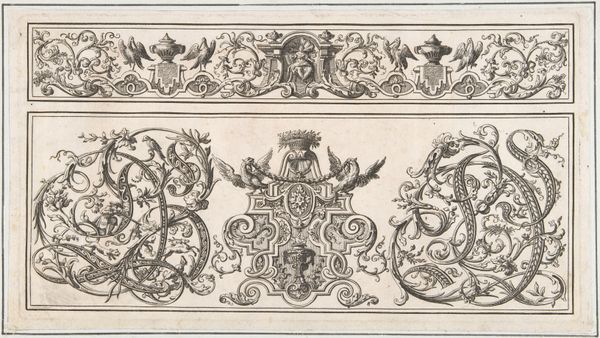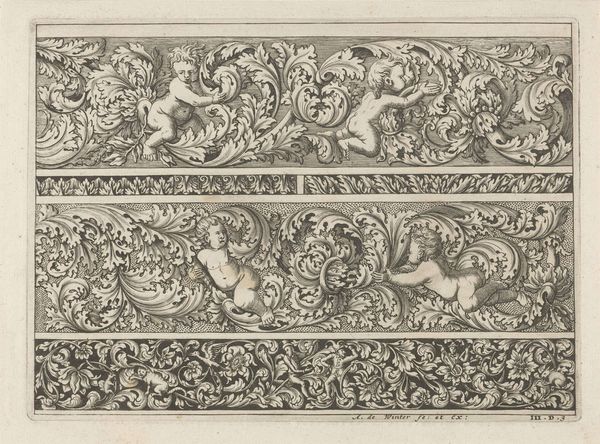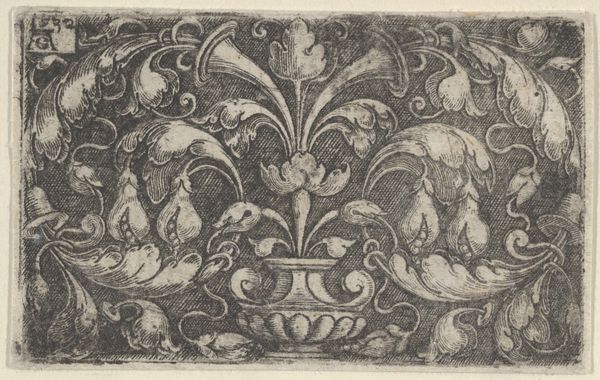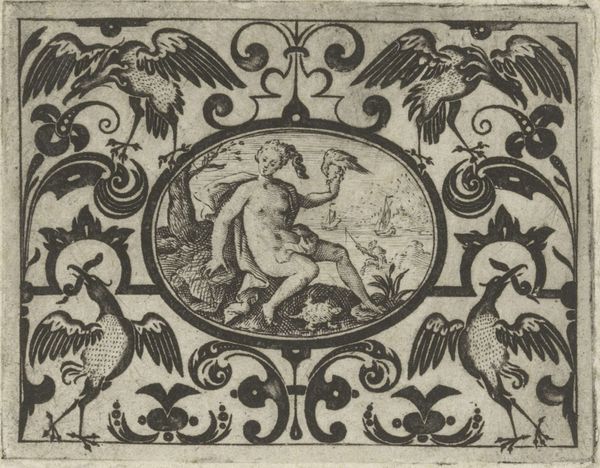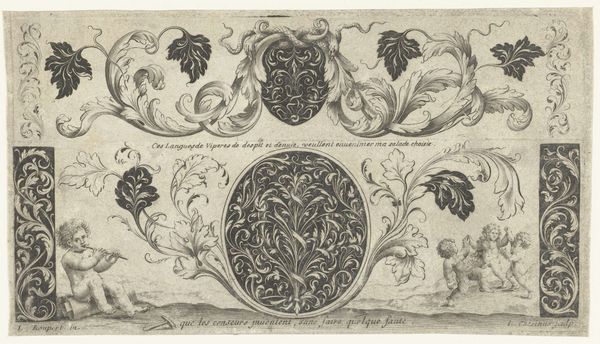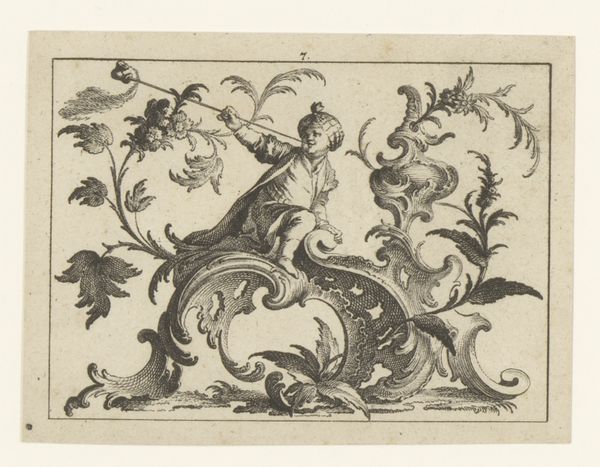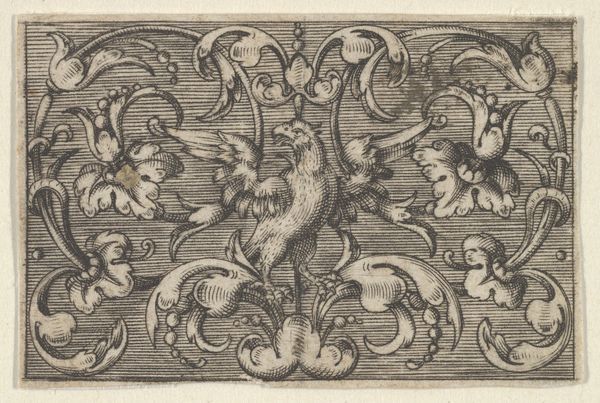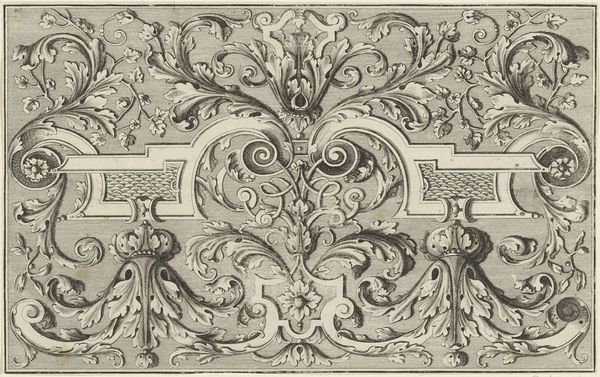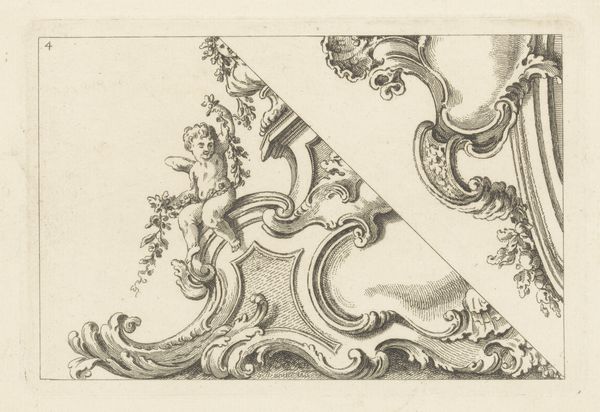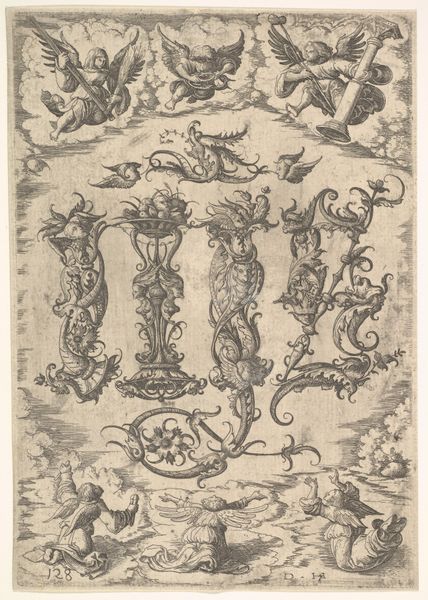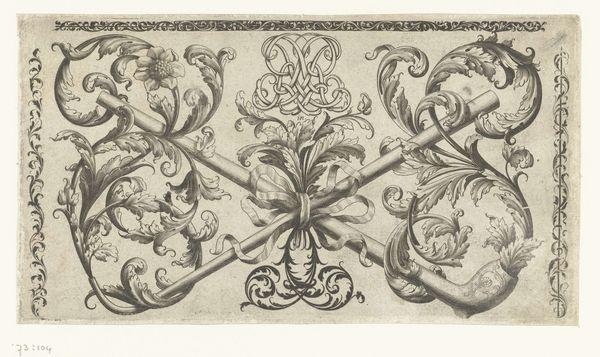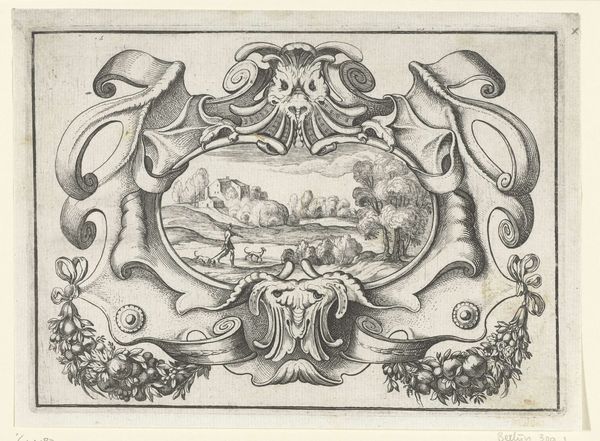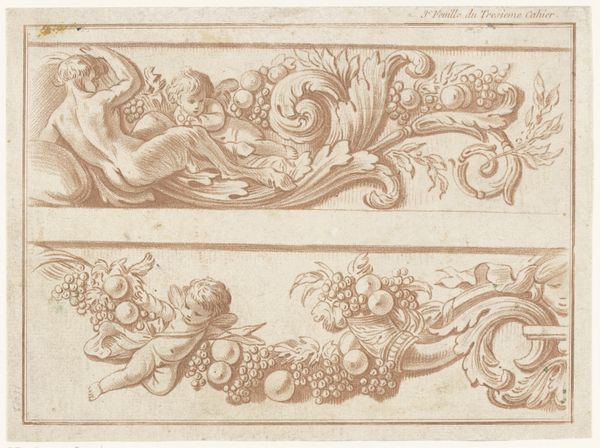
Dimensions: height 242 mm, width 515 mm
Copyright: Rijks Museum: Open Domain
Curator: We are looking at an engraving entitled "Ornament met twee vechtende tritons," which translates to "Ornament with two fighting tritons." It was created in 1846 by Ralf Leopold von Retberg. Editor: What strikes me first is the dynamic tension. The composition, rendered in fine lines, seems to teeter on the edge of chaotic struggle. Those figures—half-man, half-fish—are intensely engaged, yet also perfectly balanced. Curator: The figure of the triton has a rich history. Originally, they were seen as messengers of the sea, linking to larger questions about power, colonialism, and maritime narratives. This work situates itself in 1846, a period grappling with social anxieties around maritime exploration and the "Age of Discovery." How might these societal forces affect the imagery depicted? Editor: It's fascinating how these figures are mirror images, grappling with what seems to be a ceremonial object, perhaps a reliquary or some kind of important vessel. Do you think it signifies control over the ocean's bounty, the struggles to secure dominion over watery resources? Or perhaps this mirrors broader conflicts about national power on a global scale at that time? Curator: I would offer that these figures could very well symbolize not only the desire for dominion, but maybe more about a reflection of colonial aggression against other cultures, and it's expressed with mythological beings instead of something more literally rooted. The historical context pushes me towards the question of cultural exploitation during this period, too. Editor: You make an excellent point. Seeing the way the tritons mirror one another while engaging in this battle connects them in my mind to themes of duality and perhaps even self-conflict or struggles from within one's self. This is more universal than its maritime interpretation—which doesn't detract, just layers meaning in the image. It resonates far beyond a colonial-era critique. Curator: It speaks to the multifaceted nature of art interpretation itself, doesn't it? Editor: Absolutely, the tension of history with more fluid psychological dimensions. It's a wonderful dialogue the artist begins with us.
Comments
No comments
Be the first to comment and join the conversation on the ultimate creative platform.
